Managing a project that includes one or more rooms without windows is one of the most difficult tasks that an interior designer or architect can face.
Illuminating a dark environment and making it functional, welcoming, and elegant requires careful planning, precision, and a good dose of inventiveness.
It is difficult but not impossible as long as the lighting design project takes into account all the variables which, organically, allow you to create light.
The first thing you should consider concerns the type of room you need to light up: a basement, bedroom, bathroom or study will each require specific interventions, and you'll also have to consider how they are used.
Then there are effective tricks with artificial lighting and also the use of colors, materials, and furnishing accessories, which will allow you to achieve the desired result by giving a soul to a dark room.
In this article, we will see how to light up a room without windows and/or with little light thanks to various solutions that ensure the best results. These solutions will then have to be combined with each other to transform a dark and cramped environment into a bright and welcoming place.
In particular, we will take a look at:
- Light up a room without windows with artificial lighting
- Opt for colors that give more light to a dark room
- Choose the right decorative elements
- Brighten up a room naturally: don't forget the plants
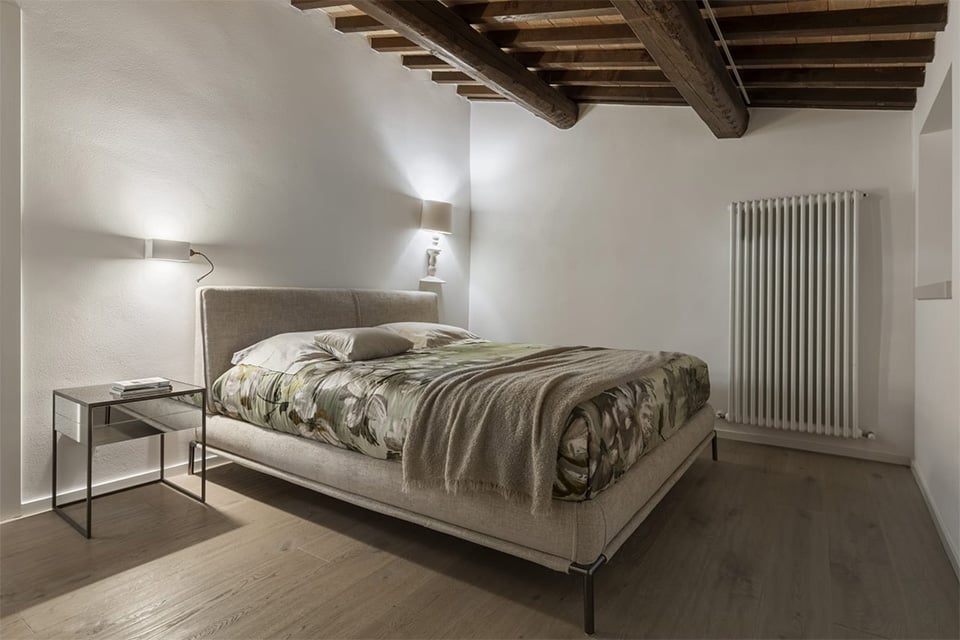
Alibabig
1. Light up a room without windows with artificial lighting
As industry professionals are well aware, according to the logic of the psychology of light, proper lighting in a home is essential for psycho-physical well-being because it is able to influence our mood and our emotions by creating the right atmosphere.
Therefore, if an environment cannot take advantage of natural light, artificial lighting is undoubtedly among the best solutions and requires careful planning that must alternate various lighting fixtures to obtain a uniform distribution.
The first thing the designer will have to evaluate is the exact level of light the room needs.
There are several variables to take into consideration:
- The size and shape of the room;
- Its intended use;
- The type of environment you want to create based on the concept and the client's needs.
As already mentioned, every environment has its own energy requirements related to the specific activities carried out in it.
For example, the general rule states that a kitchen requires around 350 lux, a living area around 200, a bedroom or relaxation area 200, while a bathroom will need 150 for general lighting and 400 for the mirror.
To light up a room without windows and, more generally, an environment with little light, the secret is to use a range of different light sources strategically which, in addition to providing the necessary light, create a sense of greater breadth.
In fact, one of the consequences of a room that enjoys little natural light is that it seems smaller and cramped, if not even claustrophobic.
On the other hand, lighting that makes some areas particularly bright at the expense of others should be absolutely avoided.
A lighting design of layered lighting can make even the darkest environment welcoming and comfortable, creating a perfect balance between:
- Ambient lighting, to illuminate the room evenly ensuring perfect visibility and giving the space a sense of warmth and depth;
- Task lighting, installing strategic, targeted, and functional light points to do certain activities (such as cooking, reading or getting dressed) according to the type of room);
- Accent lighting, decorative lighting that gives character and personality to the environment by enhancing and emphasizing corners, particular spaces, furnishings, or accessories you want to emphasize.
Therefore, the role of lighting in the design of an environment is fundamental, especially when talking about rooms where natural light is scarce or absent and you are determined not only to provide practical light but also to create the desired atmosphere.
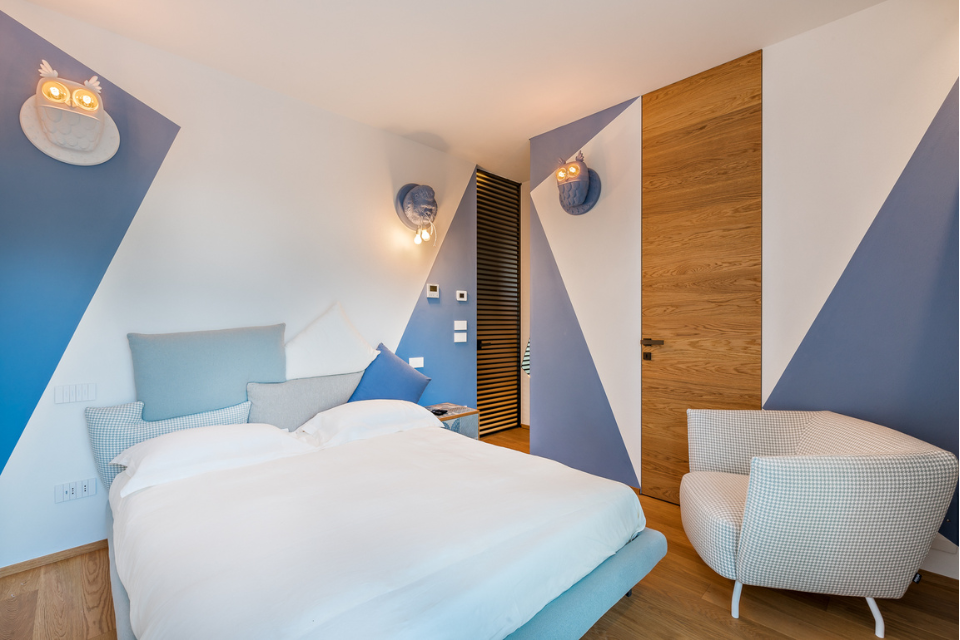
Ti. Vedo and Ugo Rilla
What type of lighting should you choose for a room with little light? 7 ideas
As we have said, the ideal solution for lighting up a room without windows (or where the light is in any case scarce) requires the integration and the right distribution of different light sources that create layered lighting.
Here are some ideas you can take inspiration from:
- For general lighting, one of the most used and effective solutions is the application of recessed spotlights which, integrated into the ceiling and transmitting light directly from above, guarantee uniform light to the whole environment similar to natural light.
- To light up a dark room, it turns out that the use of LED lamps are very functional. In addition to being able to cover large spaces, they are also advantageous in terms of consumption.
- LED strips, instead, combine design and discretion, and they can also be put on some pieces of furniture (for example, the edges of a bookcase or wardrobe) to illuminate particular corners of the room.
- When you are lighting up a kitchen, you can opt for a single suspension lamp capable of surprising or for several elements close together which, positioned above the table or peninsula, are an excellent source of functional lighting.
- You absolutely should not forget to integrate designer wall lamps and appliques into the project, choosing light and transparent materials that enrich and emphasize the space.
- Always considering the atmosphere you want to create, you will get great results by adding a few table lamps and one or two floor lamps as long as they are tall and thin. In addition to providing functional light, they will add warmth and atmosphere to particular corners of the room.
- With accent lighting, installing wall lamps and spotlights, for example, in niches or inside shelves and bookcases, the sense of depth will amplify as well as create an appealing aesthetic and emotional impact.
The choice of materials will also be fundamental to the success of the project.
For example, a suspension lamp in glass or crystal, in addition to making the environment elegant, will provide an incredible luminosity because of the reflections it creates.
By the same token, you could choose reflective metal accessories such as silver, chrome, and brass combined with glass and transparent lampshades.
And you should avoid bulky light fixtures, which would make the space seem even smaller.
In the end, choosing the right color temperature is essential to give the environment the desired effect, whether it is more energetic or relaxing.
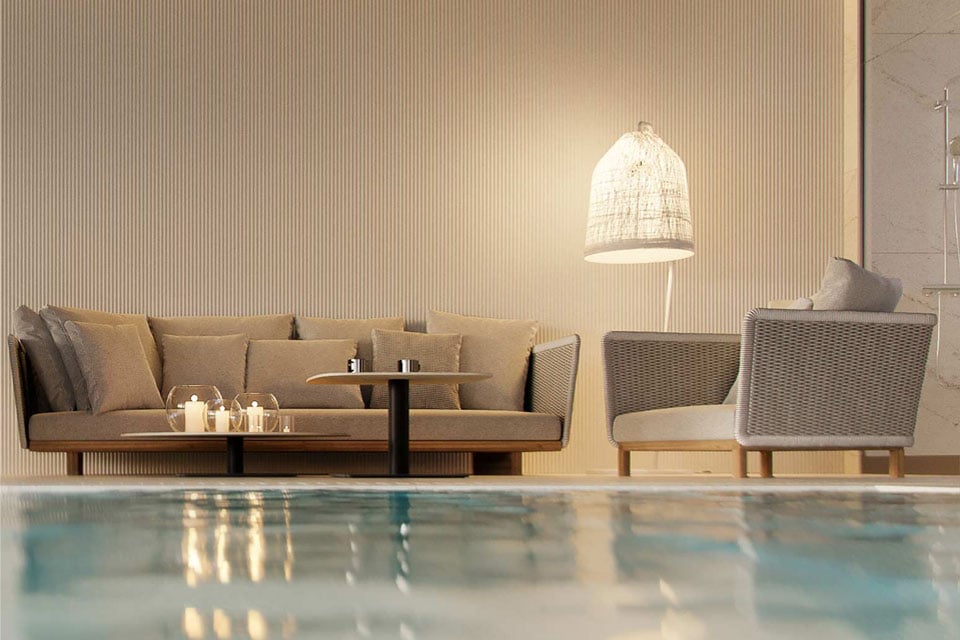
Black Out
How to choose the right decorative lamps for each room
We have said that one of the fundamental factors to consider when lighting up a room without windows or with little light is its intended use.
Designer decorative lamps are essential elements that not only make a clear style statement and give a strong and defined character to the environment but also meet the functional characteristics of the lighting.
We have seen some examples of perfect lamps to take inspiration from based on the dark room you are illuminating and on what we have said in the general guidelines.
Light up a kitchen with little light
The kitchen is certainly a room that needs light that is as similar to natural light as possible.
Areas like the one above the peninsula or the hob require task lighting to move around and carry out your activities with maximum visual comfort.
An idea for a modern kitchen?
A combination of suspension lamps of different sizes installed at different heights, such as Bag, which, thanks to the diffuser in glossy white or bronze ceramic, will reflect the light giving a great luminosity.
The suspensions from the Ceraunavolta collection are extremely elegant and refined, a union of blown glass one by one in different shapes to create multiple compositions which, thanks to their delicate transparency, will create unexpected and changing lighting effects.
Brighten up a dark bedroom
If it is true that the bedroom is the room dedicated to rest and it must create a relaxing atmosphere, it is equally true that good visibility is required, for example, to get dressed or to read a book before bed.
To light up the bedroom, especially if dark, it is necessary to provide a light source for ambient lighting and one for task lighting.
For general lighting, a series of precious suspensions in maxi format such as 24 Karati in cased glass, available in milky white, transparent smoked, or straw yellow glass, used individually or in composition, will emit a filtered, delicate light.
For the lighting of the bedside area, as well as the classic lampshades, you can also opt for wall lamps. For example, Agua's essential lines and the transparency of its glass diffuser will create a delicate and functional light point at the same time.
Illuminate a windowless bathroom
A windowless bathroom is a rather complicated situation, above all because, in this room, activities that require perfect task lighting take place (like shaving or putting on makeup).
Also, for the lighting of this environment, in addition to recessed spotlights, decorative lamps can be the winning choice to light up a room without windows.
One or more lamps, such as Makeup, available in both suspension and wall versions, can be used to illuminate the mirror with a minimal design given by an "old" light bulb which, with a slight restyling, projects itself perfectly into a contemporary context.
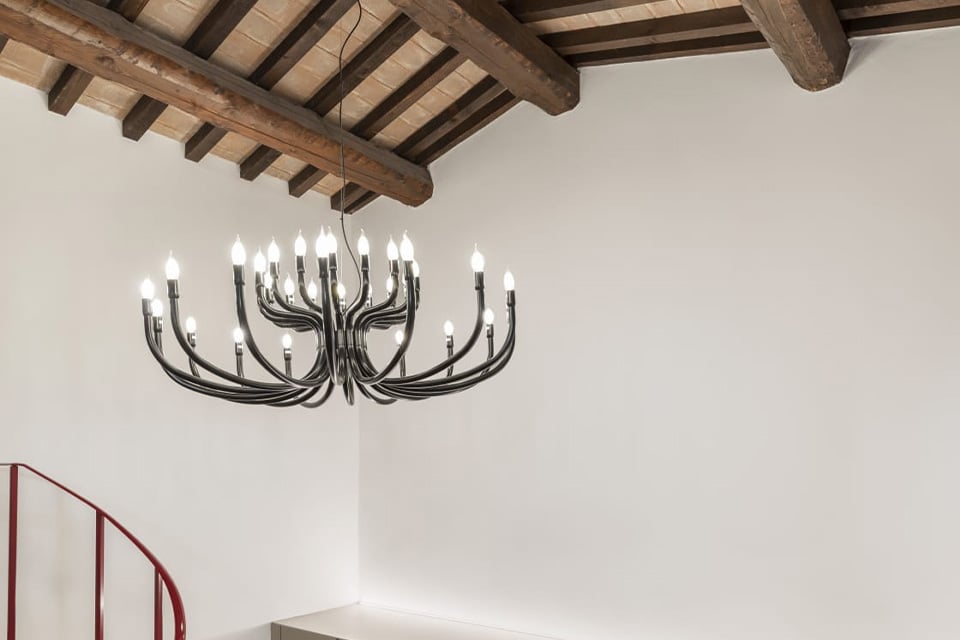
Snoob
2. Opt for colors that give more light to a dark room
In addition to the lighting choices in the strict sense, the choice of colors is also essential for lighting up a room without windows.
There is only one way forward: clear tones that will also emphasize the lighting design project.
The white on the walls in particular helps to counteract the claustrophobic effect that a windowless room or dimly lit room can create.
The same consideration also applies to the flooring: a light parquet or plain tiles in soft, bright colors will give a sense of breadth to the environment.
This is also true when choosing colors for the simple furnishings.
The use of shelving with visible white shelves will also make the space more airy.
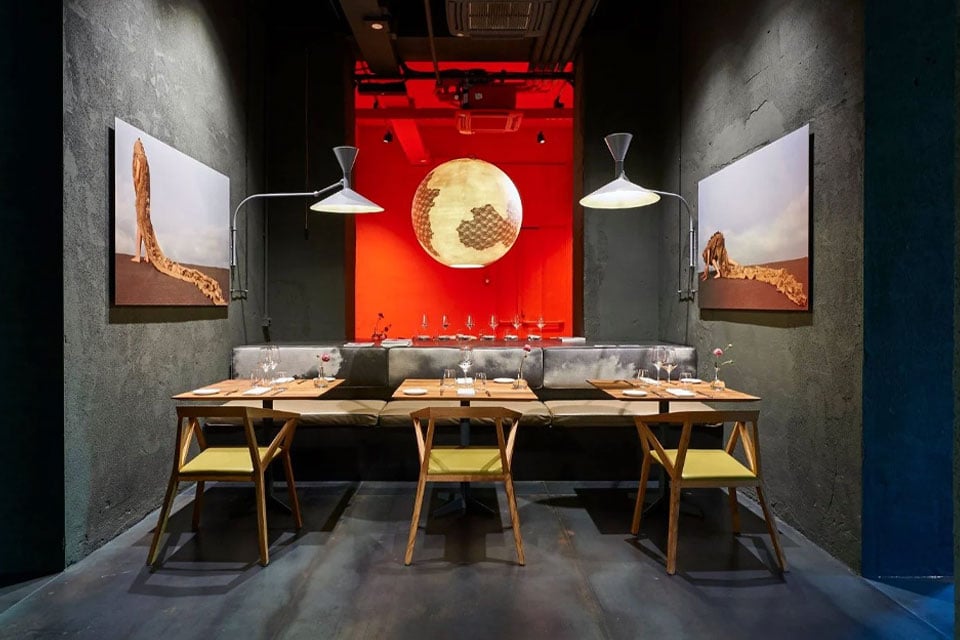
Ululì - Ululà
3. Choose the right decorative elements
To light up a room without windows, it is also important to choose the right accessories.
A classic mirror hanging on the wall will create an incredible optical effect giving depth and luminosity to the room.
To amplify the result, you can add, on both sides, a designer wall lamp like those from the Alì e Babà collection in white glazed ceramic, or with a linen lampshade for a more diffused light. Or you could place mirrors behind table lamps where you want to add more atmosphere, provided the lamps match the furnishing style.
Be careful not to overdo it with paintings and photographs. This doesn't mean not using them but calibrating them expertly so that they give a characteristic touch without making the room seem smaller.
For this reason, also in this case, light tones should be used — glossy or glassy patinas that refract light.
Small metallic objects or transparent vases will also increase the luminous effect.
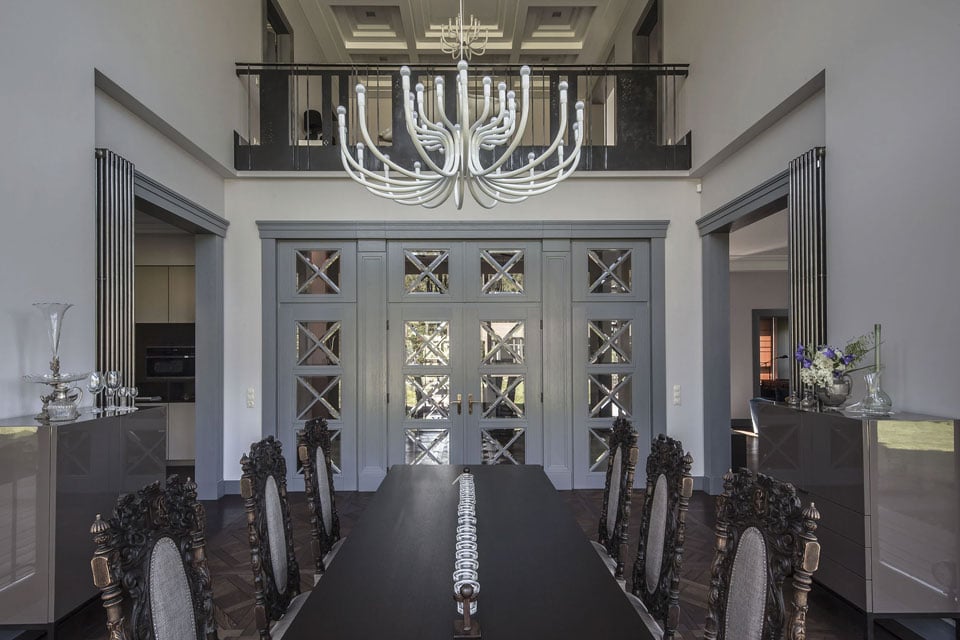
Snoob
4. Brighten up a room naturally: don't forget the plants
The addition to natural elements such as plants, if correctly positioned and provided that they are not too invasive, can help compensate for the lack of natural light, giving that extra touch and making the room more welcoming.
Placed, for example, on a console or in the center of a coffee table, vases with bright shades will give life and breath to the environment.
Be careful to choose species that can survive without natural light or opt for silk plants.
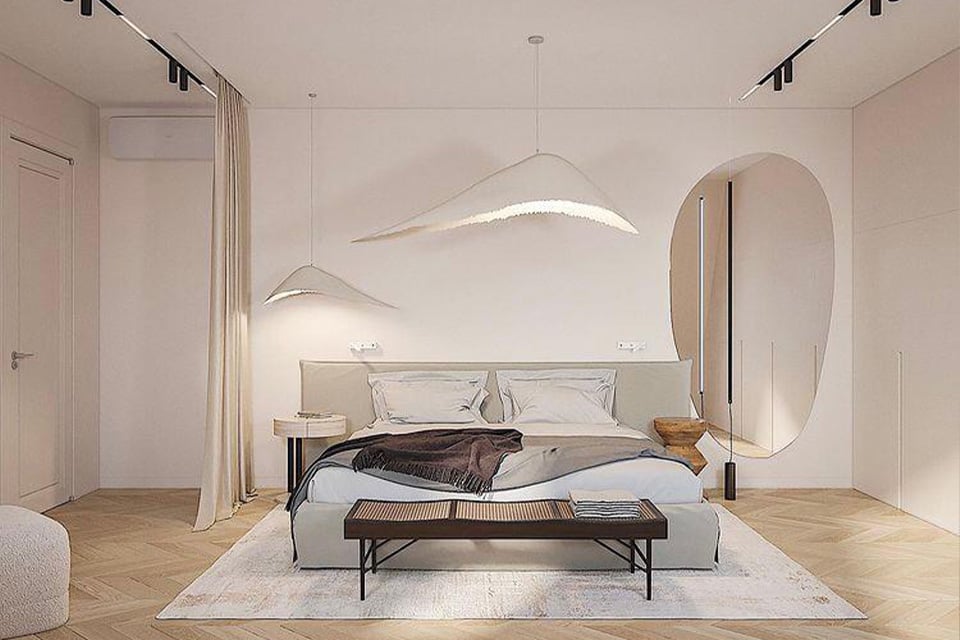
Moby Dick
How to light up a room without windows: 4 original solutions
We have seen how lighting up a room without windows or with little light requires the development of a project at three hundred and sixty degrees. You have to take into account all the variables capable of guaranteeing the necessary light to the environment and the people who inhabit it, which include:
- The use of artificial light to create layered lighting that combines different types of lamps to obtain a uniform light effect without shadows, simultaneously lending character and personality to any room;
- The choice of light colors for walls, flooring, and furnishings with essential features;
- The identification of decorative elements like mirrors or reflective complements capable of amplifying the effect of artificial light;
- The use of plants to make the room more hospitable and welcoming.



